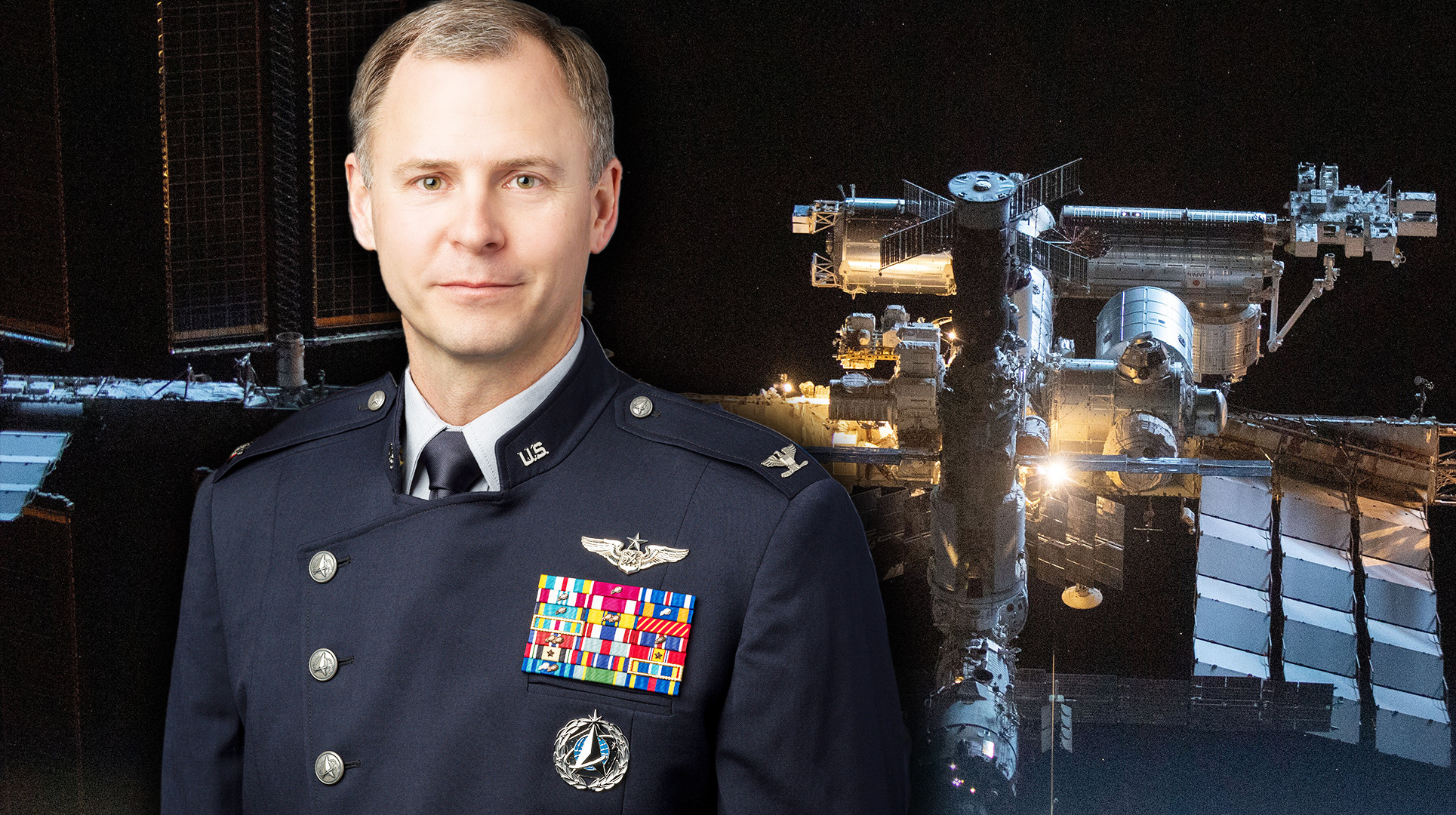

The Space Force may have its first boots off the ground and into orbit this year. Space Force Col. Nick Hague will join a NASA mission to the International Space Station sometime this fall, a flight that would make him the first member of the nation’s new space-focused military branch to launch into space.
The trip will be Hague’s third flight toward space. His previous two were one very long trip and one very short one. In 2019, Hague spent more than six months on the ISS. In 2018, he launched on a Russian mission headed to the ISS which suffered a near-catastrophic engine failure two minutes after liftoff. But Hague survived, parachuting back to earth in the crew capsule.
Hague will act as the pilot on NASA’s Space X Crew-9 mission aboard the Dragon spacecraft. The launch is set to take place “no earlier than August,” according to a Space Force press release.
While Hague will be the first member of the Space Force to go out of this world, the Department of Defense has been the main source of NASA astronauts since the 1950s. Nearly two-thirds of NASA astronauts have come from the U.S. military.
Hague will join Commander Zena Cardman, Mission Specialist Stephanie Wilson, and Roscomos cosmonaut Mission Specialist Aleksandr Gorbunov. Once Hague gets to the space station, he will become a flight engineer and help the crew conduct various scientific research under unique space conditions like microgravity. He will be on board the space station for more than six months.
“The International Space Station provides a unique platform in microgravity, which allows researchers from around the world to explore and discover processes that could have significant impact on the behavior of our bodies and the environment around us both on Earth and off planet,” Hague told the service.
The 2024 mission will be Hague’s first spaceflight as a Guardian but his third trip into space.
Hague was commissioned as a 2nd Lieutenant in the Air Force in May 1998. He was assigned to Kirtland Air Force Base, Albuquerque, New Mexico and worked on advanced spacecraft technologies. A few years later, he attended a flight test engineering course at the Air Force Test Pilot School at Edwards Air Force Base, California. After graduating, he tested F-16, F-15 and T-38 aircrafts and then deployed to Iraq where he did experimental airborne reconnaissance. In 2013, Hague was chosen by NASA to become an astronaut and completed candidate training in July 2015.
Subscribe to Task & Purpose today. Get the latest military news and culture in your inbox daily.
Hague’s first attempt to go into space was in 2018 when he was a U.S. astronaut and a Russian Cosmonaut launched on Soyuz MS-10, a Russian mission to the ISS from Russia’s primary space facility in Kazakhstan. But when two of the rocket stages collided during separation, Hague was forced to abort the mission, a near-worst case malfunction in the early minutes of the flight.
The crew capsule blasted away from its rocket and Hague and his crewmate safely returned to earth under an emergency parachute. They landed 250 miles from their launch site after just 20 minutes in the air.
“Not every mission that fails, ends up so successful,” former NASA chief Jim Bridenstine told reporters a day after the rocket failure.
Hague reached the ISS in March 2019 and spent the next 203 days on the orbiting laboratory. Hague conducted three spacewalks that totaled over 19 hours and participated in hundreds of biology, biotechnology, physical science and Earth science experiments.
After the 2019 mission, Hague became the Space Force Director of Test and Evaluation at the Pentagon. In 2021, he officially transferred to the Space Force.
“Guardians worldwide ensure safe and secure operations of critical systems for launch and on station,” he said. “Guardians provide critical support without which our NASA human spaceflight program wouldn’t be possible.”
The Space Force currently has around 8,100 activity duty guardians.
The latest on Task & Purpose
- The Army asked soldiers to turn in excess gear. It got back 37,000 items
- Medal of Honor recipient Clint Romesha unpacks life as a tanker
- Navy SEALs who disappeared during mission off Somalia identified
- Ukrainian Bradley only had a two-person crew when it wrecked a T-90
- China is expanding its marine corps, but how capable is it?
